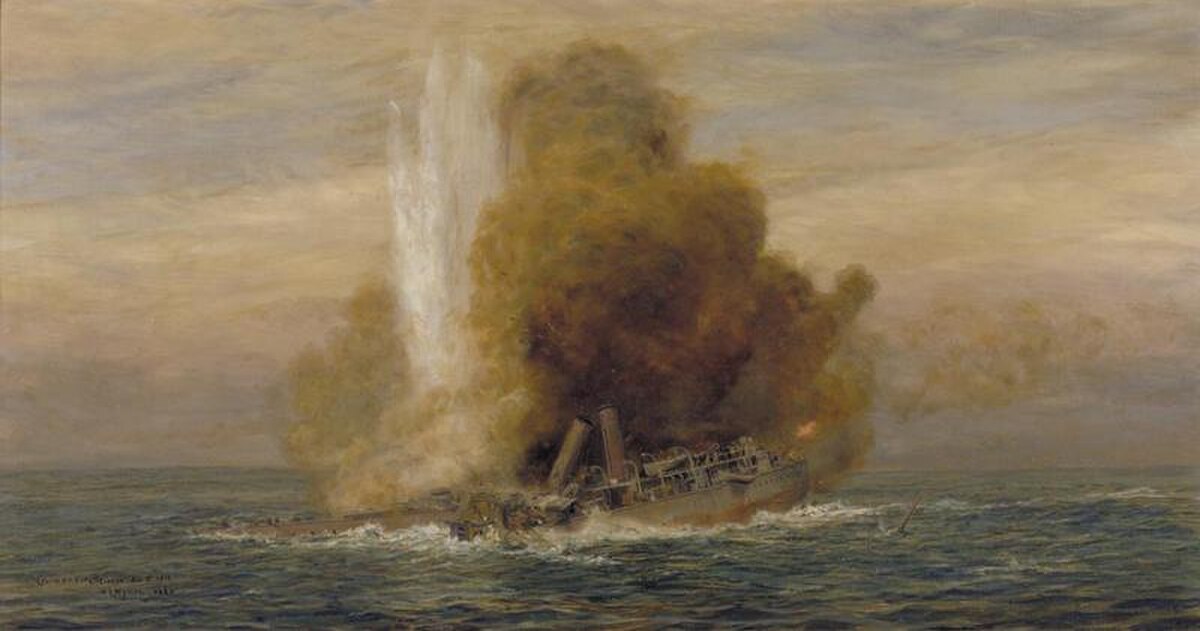
Atlantic U-boat campaign
North SeaThe Atlantic U-boat campaign of World War I was the prolonged naval conflict between German submarines and the Allied navies in Atlantic waters—the seas around the British Isles, the North Sea and the coast of France.
Initially the U-boat campaign was directed against the British Grand Fleet. Later U-boat fleet action was extended to include action against the trade routes of the Allied powers. This campaign was highly destructive, and resulted in the loss of nearly half of Britain's merchant marine fleet during the course of the war. To counter the German submarines, the Allies moved shipping into convoys guarded by destroyers, blockades such as the Dover Barrage and minefields were laid, and aircraft patrols monitored the U-boat bases.
The U-boat campaign was not able to cut off supplies before the US entered the war in 1917 and in later 1918, the U-boat bases were abandoned in the face of the Allied advance. The tactical successes and failures of the Atlantic U-boat Campaign would later be used as a set of available tactics in World War II in a similar U-boat war against the British Empire.
